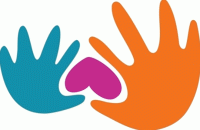Support for Implementing Social, Emotional Learning
Your content has been saved!
Go to My Saved Content.Everyone carrying out some kind of social, emotional learning (SEL) or related program encounters a common set of problems while trying to adapt even proven program materials to their unique and often fast-changing reality. And all program developers realize that their ability to support those using their programs is ultimately at least as essential as their actual materials.
When you add in the desire to scale up, particularly nationally or internationally, the challenges of providing support multiply. Many program developers are addressing these concerns and are looking to electronic media as a tool for accomplishing this. Among those who have the widest geographic dispersion of their program and who have committed time, creativity, and resources to addressing the support issue, the Second Step program stands out. The Second Step program is developed by Committee for Children (CfC), located in Seattle, Washington.
I'd like to share a bit of background about CfC and the Second Step program, and in my next post, I will report on some of their web-based efforts to provide implementer support.
How Second Step Works
The Second Step program is an evidence-based, CASEL SELect program for children from preschool through middle school. Each grade level features developmentally appropriate and sequenced ways to teach social, emotional skills such as self-regulation, empathy, emotion management, problem solving, and executive function skills.
Second Step has translations into multiple languages and has used the research on brain-friendly learning to create a powerful pedagogy developed through extensive implementation and feedback. Key elements include:
- Embedding varied instructional and management strategies into lessons designed to support student engagement and learning, including calling on students at random, giving students think time, modeling, choral response, physical movement, nonjudgmental responses, role playing, nonverbal responses, attent-o-scope, and similar self-tracking mechanisms, and partnering students
- Attending to principles of Universal Design for Learning by presenting content to students in a number of ways: visually (using photographs, videos, and visual aids), orally, in writing, and through songs
- Emphasizing opportunities for reinforcement outside of lesson time, including with families at home and integration into academic subjects and the broader school culture and climate
A perusal of social skills shows the array of materials available to assist implementers. These include not only instruction-related supports, but attempts to provide a deeper understanding of the program, theory and research supporting its use, and ways to help integrate the Second Step program into one's local context. The Self-Regulation White Paper is an excellent resource for anyone wishing to implement SEL and related programs into early childhood settings. There is a parallel document for K-5, as well. Anyone struggling with integrating SEL with PBIS or RTI will find this document to be of great value.
Yet beyond these and other written materials is the reality that when situations arise, materials may or may not be adequate to resolve a specific problem, such as when there is unexpected diversity in a classroom with regard to background in a program or level of SEL skills, or changing school mandates, like the Common Core, which may compete with the Second Step program for instructional time.
Within one's school building, colleagues may all be at the same level of implementation knowledge and may struggle to overcome such challenges. Or one might be the only kindergarten or seventh grade teacher implementing at one's school, and so there are limited resources available to help.
The best source of support is not written material but another person, ideally someone who has faced and overcome the same or similar problems. Recognizing this problem, CfC has piloted the creation of communities of learners and problem solvers related to Second Step implementation. In my next blog, I will take a look at the ways in which they do this and provide some examples.
